Picture this: in the quiet darkness of a forest night, while most creatures sleep, a remarkable insect is hard at work performing one of nature’s most essential services. The American burying beetle, with its striking orange and black markings, scuttles through the underbrush with a mission that would make even the most dedicated undertaker proud. This isn’t just any ordinary beetle – it’s a master of death, transformation, and survival that has captured the attention of scientists and conservationists worldwide. But here’s the shocking truth: this incredible creature, once found across 35 states, now clings to existence in just a handful of locations, making it one of North America’s most endangered insects.
A Living Jewel in the Night
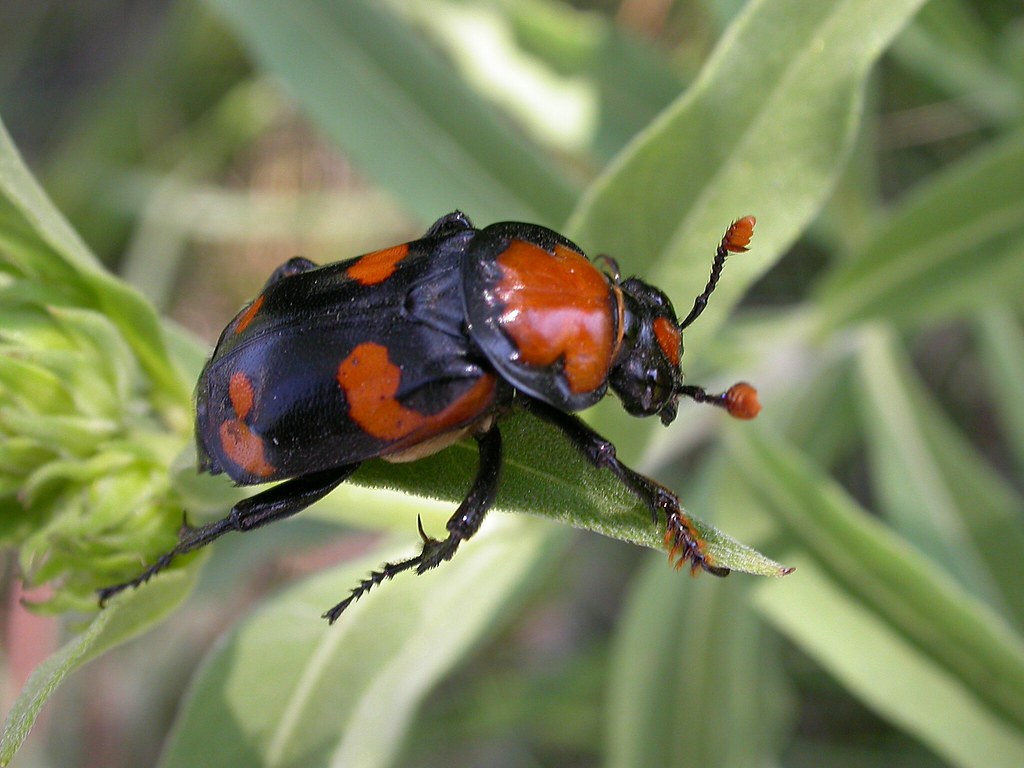
The American burying beetle stands out like a precious gem against the forest floor, measuring up to 1.5 inches long with distinctive bright orange patches adorning its glossy black body. These aren’t just pretty decorations – those vibrant markings serve as a warning to potential predators that this beetle means business. The contrast is so striking that encountering one in the wild feels like discovering a hidden treasure, which makes their rarity all the more heartbreaking. Their robust build and powerful legs tell the story of a creature perfectly designed for heavy lifting and digging, capabilities that become crucial when you understand their extraordinary lifestyle. What’s truly fascinating is how these beetles can live up to a year, an impressive lifespan for an insect that spends much of its time literally buried underground.
The Science Behind Their Supernatural Senses
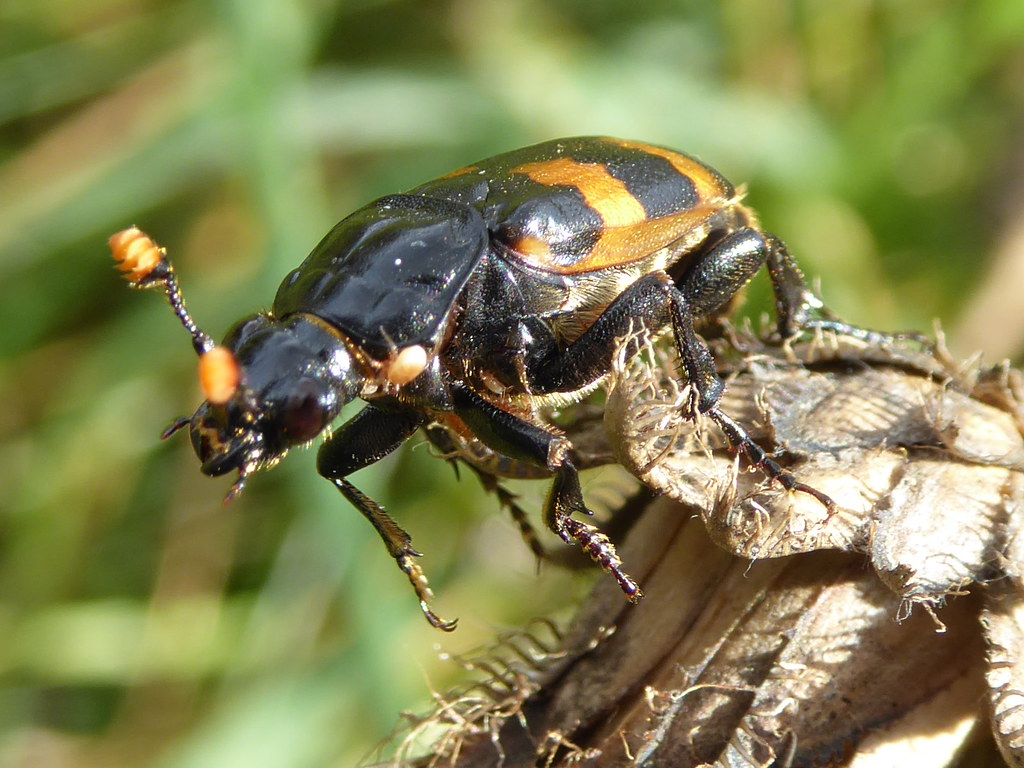
Imagine being able to smell death from over a mile away – that’s exactly what American burying beetles can do with their incredibly sensitive antennae. These remarkable sensory organs contain thousands of chemoreceptors that can detect the specific chemical compounds released by decomposing animals, even in tiny concentrations. Scientists have discovered that these beetles can distinguish between different types of carrion and even determine the freshness of their potential meal before they arrive at the scene. This supernatural ability puts them in direct competition with flies, other beetles, and scavengers in a race against time. Their success depends entirely on reaching deceased animals quickly, before decomposition advances too far or other creatures claim the prize.
Masters of Underground Architecture
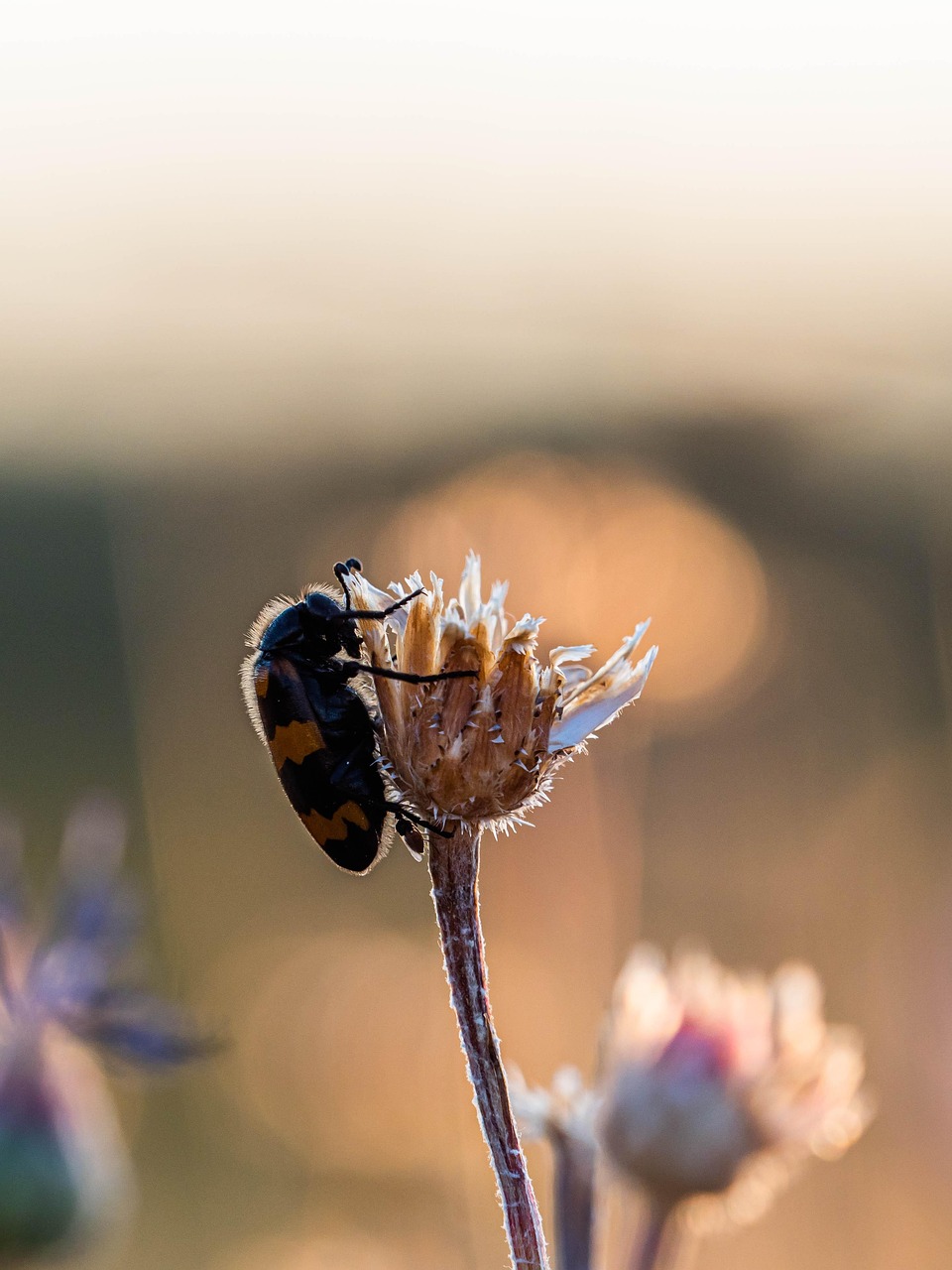
When American burying beetles find suitable carrion, they transform into skilled engineers and architects, creating elaborate underground chambers that would impress any construction worker. The process begins with both male and female beetles working together to move the carcass to soft soil, sometimes dragging it distances of up to 10 feet. They then excavate a burial chamber beneath the body, carefully shaping it to fit their precious cargo perfectly. The beetles remove fur or feathers, form the remains into a compact ball, and coat it with antimicrobial secretions that prevent harmful bacteria from spoiling their investment. This underground nursery becomes a perfectly climate-controlled environment where their future offspring will develop in safety and luxury.
Love Stories in the Graveyard
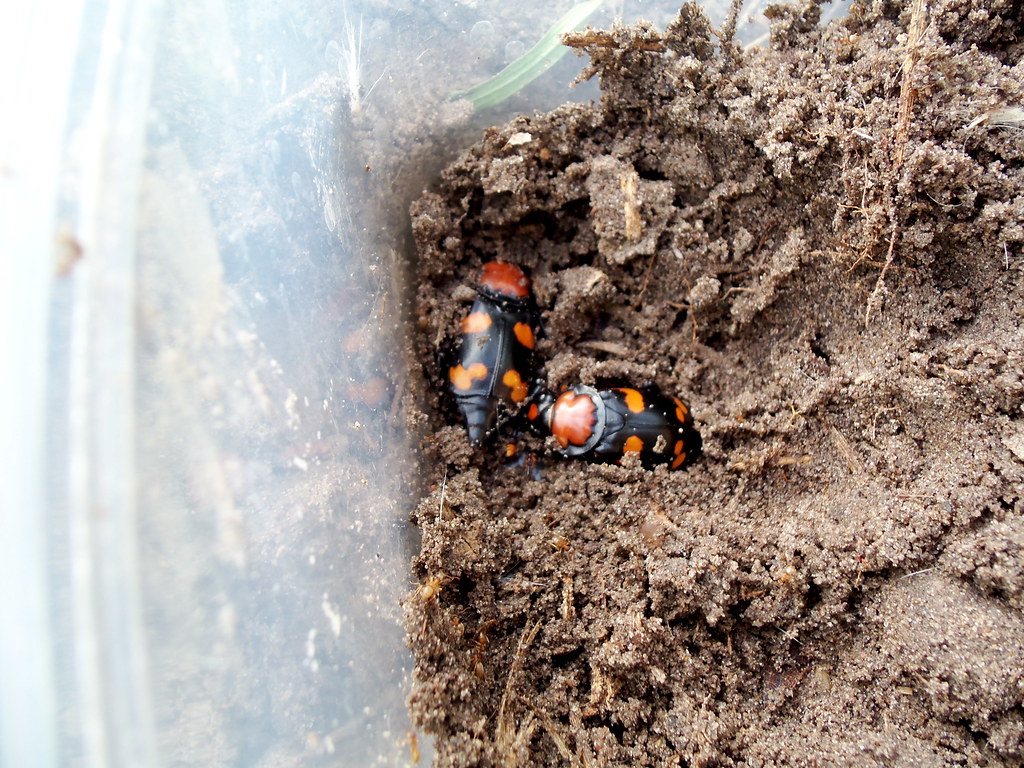
The romantic life of American burying beetles unfolds in perhaps the most unusual setting imaginable – beside a decomposing carcass in an underground chamber. Males and females often meet at carrion sites, where they engage in elaborate courtship rituals that involve stroking each other with their antennae and sharing regurgitated food. This might sound gross to us, but for these beetles, sharing a meal represents the ultimate expression of trust and partnership. Once mated, both parents work together with remarkable dedication, taking turns guarding their buried treasure and preparing for the arrival of their larvae. Their partnership extends far beyond mating, as both parents will spend weeks caring for their young in ways that challenge everything we thought we knew about insect behavior.
Revolutionary Parenting in the Insect World
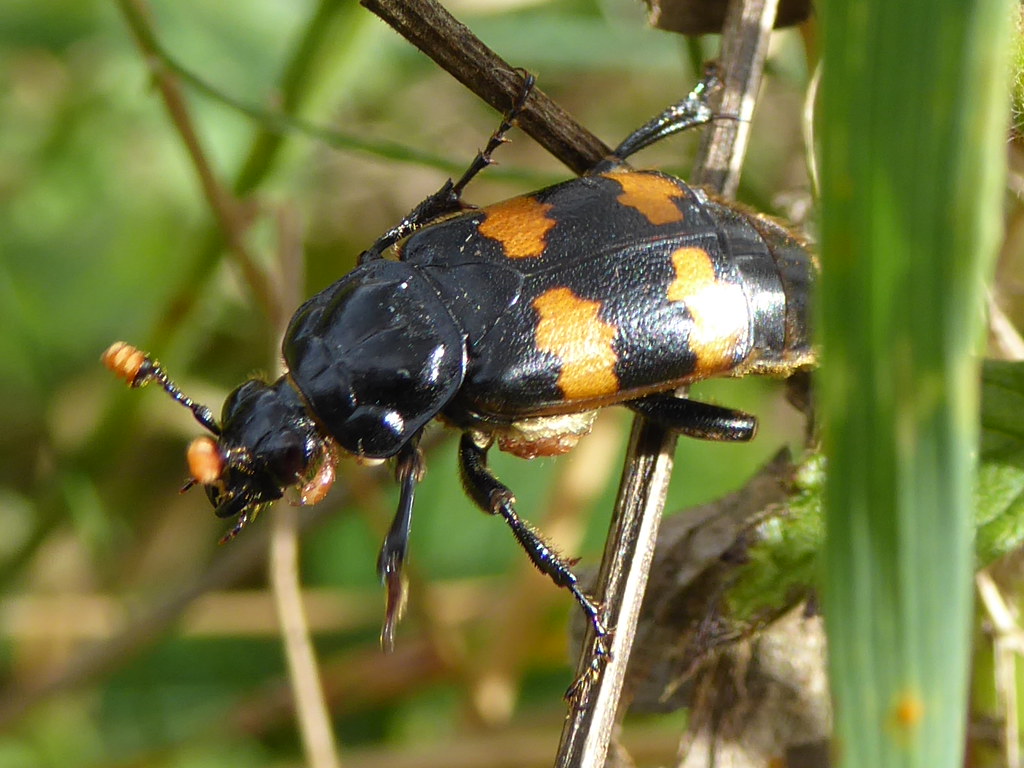
American burying beetles shatter the stereotype of absent insect parents by providing some of the most intensive childcare found anywhere in the arthropod world. Both mother and father remain with their larvae for several weeks, regurgitating partially digested carrion directly into their babies’ mouths like devoted bird parents. The parents also defend their underground nursery from intruders, maintain the burial chamber’s condition, and even adjust the temperature and humidity levels for optimal development. This level of parental investment is almost unheard of among beetles and represents millions of years of evolutionary refinement. Scientists believe this extraordinary parenting strategy evolved because large carrion sources are relatively rare and valuable, making it worth the parents’ time and energy to ensure their offspring’s survival.
The Tragic Tale of Habitat Loss
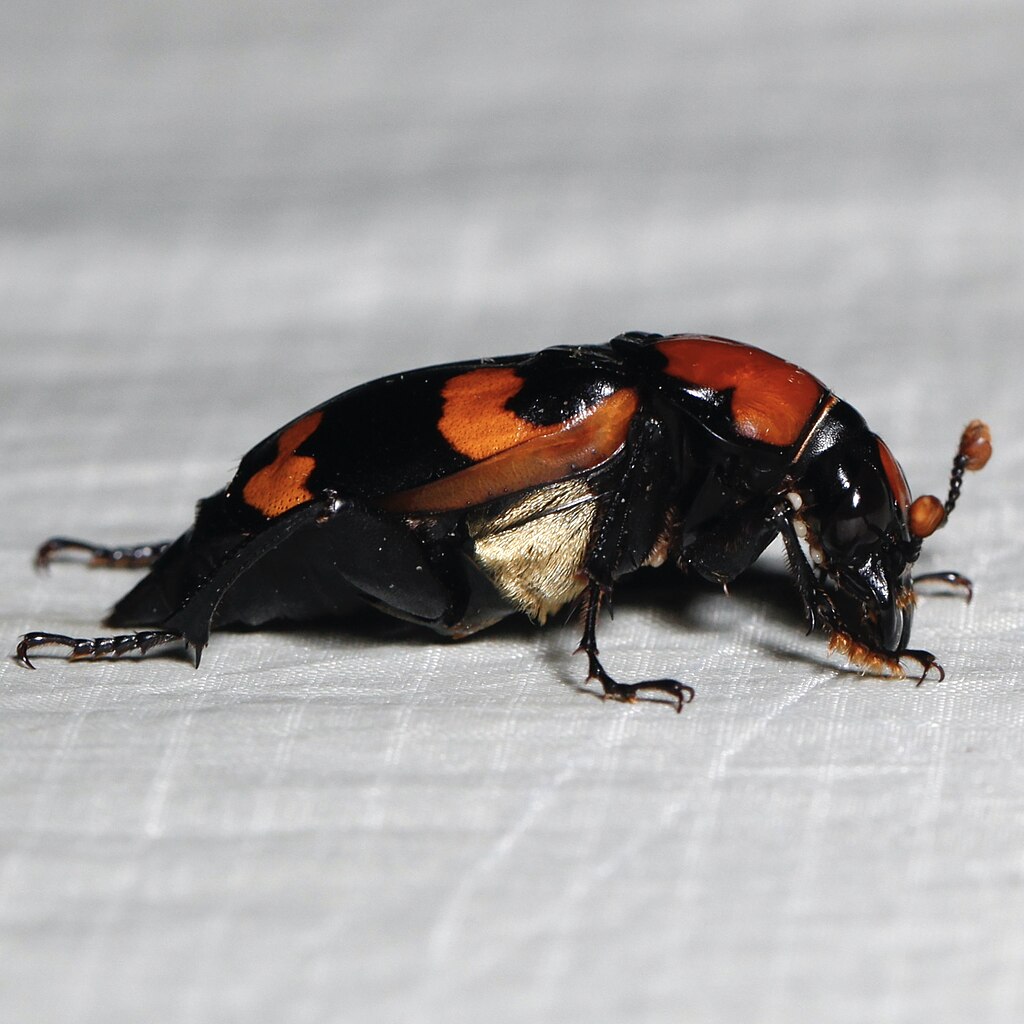
The story of the American burying beetle’s decline reads like an environmental tragedy that spans more than a century of human expansion and land development. These beetles once thrived across a vast range stretching from southern Canada to Texas, but agricultural intensification and urban sprawl systematically destroyed the diverse habitats they needed to survive. The conversion of native grasslands and forests into farmland eliminated both the beetles’ nesting sites and the diverse wildlife populations that provided carrion. Perhaps most devastatingly, the widespread use of pesticides and herbicides created chemical deserts where even the hardiest insects struggle to survive. Today, researchers estimate that over 90% of the beetle’s original habitat has been lost or severely degraded, leaving scattered populations isolated and vulnerable.
Competition from an Unlikely Enemy
One of the most surprising threats to American burying beetles comes from an explosion in fire ant populations across their southern range. These aggressive invaders arrived from South America and quickly established themselves as formidable competitors for carrion resources. Fire ants work in massive colonies and can overwhelm individual beetles through sheer numbers, stealing carrion before the beetles can bury it. The ants also pose a direct threat to beetle larvae and adults, attacking them with painful stings and powerful mandibles. This biological invasion has effectively locked American burying beetles out of prime habitat in states like Texas and Oklahoma, where fire ant populations have reached staggering densities. The situation demonstrates how non-native species can push already vulnerable native wildlife closer to extinction.
Life on Block Island
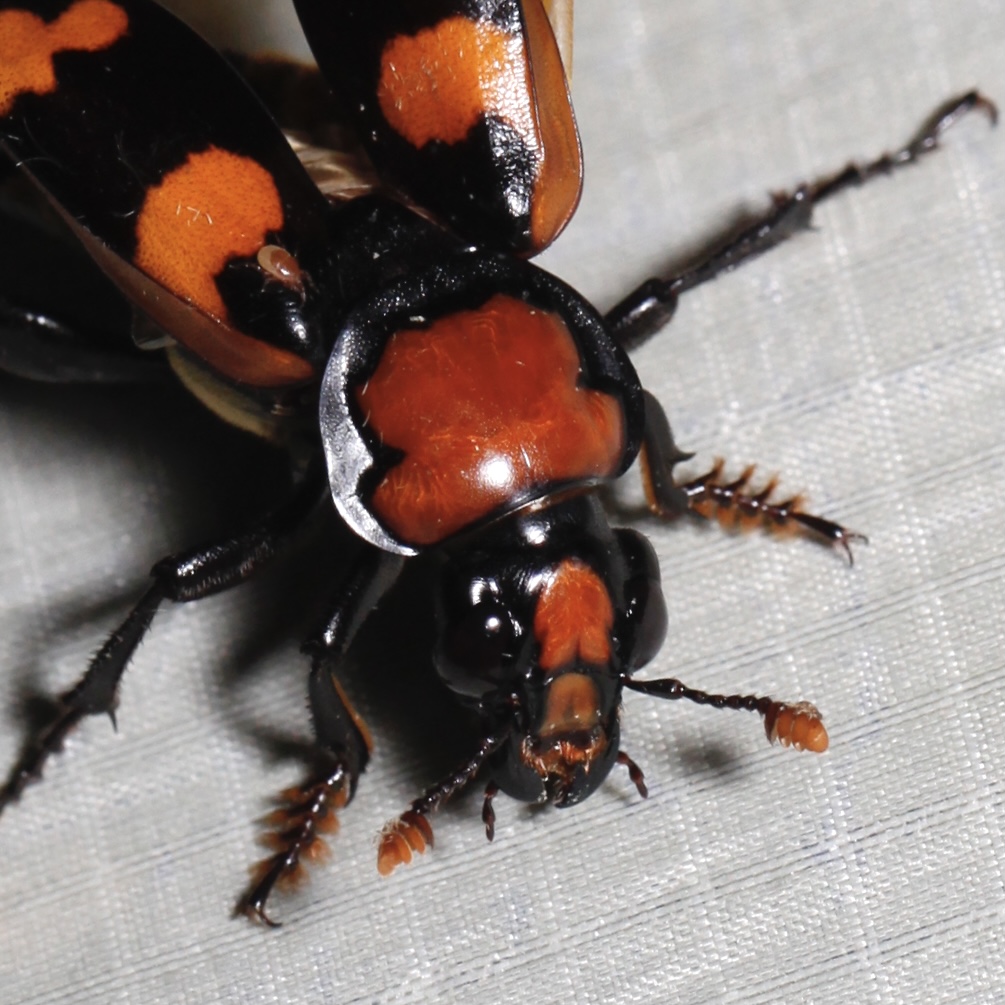
Block Island, a small piece of land off the Rhode Island coast, has become an unlikely fortress for one of the largest remaining populations of American burying beetles in the world. This 10-square-mile island provides a unique refuge where the beetles have thrived despite their mainland struggles, with populations reaching several hundred individuals during peak years. The island’s isolation protects the beetles from many mainland threats, while its diverse habitats and abundant bird populations provide steady carrion sources. Researchers have discovered that Block Island beetles show subtle genetic differences from mainland populations, suggesting they’ve been isolated long enough to begin evolving unique characteristics. However, even this island sanctuary faces challenges from climate change, development pressure, and the constant risk that a single catastrophic event could wipe out this precious population.
Conservation Heroes Working Against Time
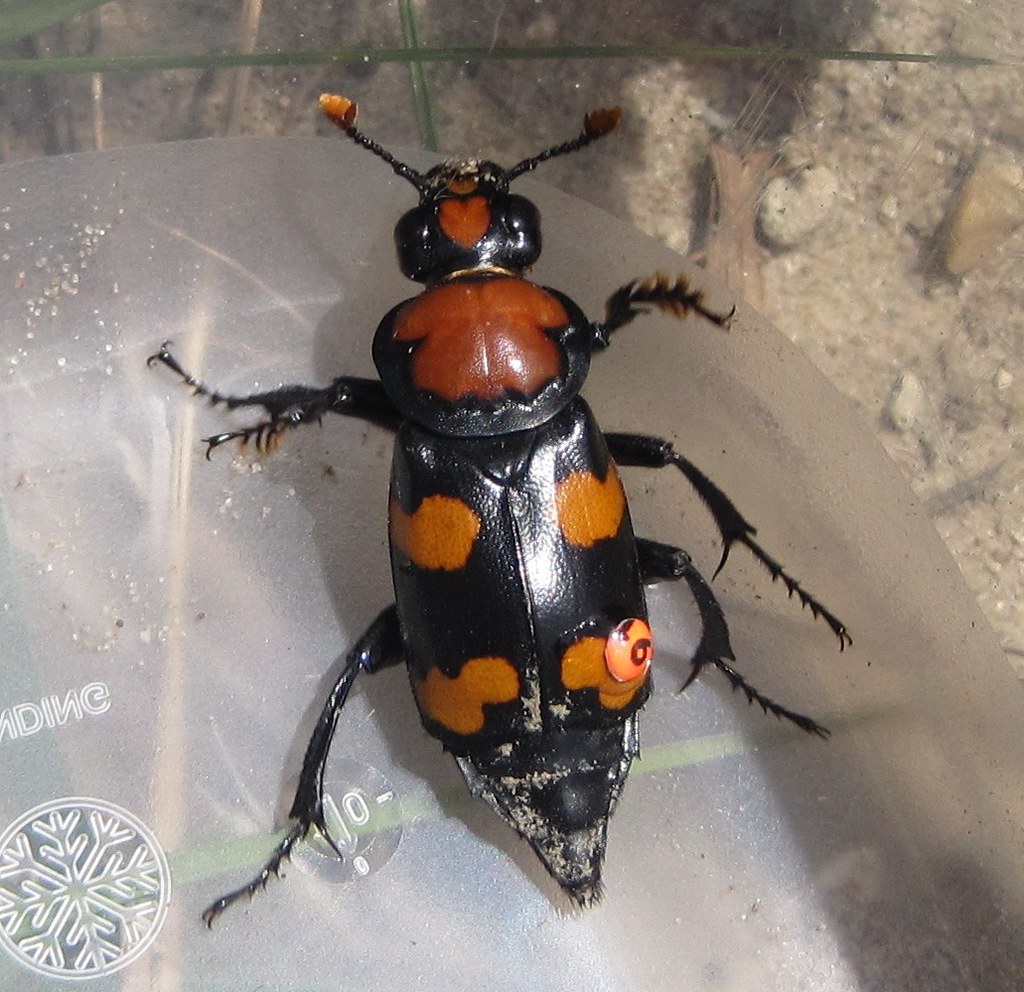
Dedicated teams of scientists, conservationists, and wildlife managers have launched ambitious efforts to save American burying beetles from extinction, racing against time to establish new populations and protect existing ones. Captive breeding programs at facilities like the Saint Louis Zoo have successfully produced thousands of beetles for release into restored habitats across the Midwest. Researchers have developed innovative techniques for transporting adult beetles and their larvae, carefully monitoring genetic diversity to ensure healthy breeding populations. Field biologists spend countless hours tracking individual beetles with tiny radio transmitters, learning crucial details about their behavior and habitat needs. These conservation heroes work through hot summer nights and bitter winter preparation seasons, driven by the knowledge that every beetle saved represents hope for the species’ survival.
The Ripple Effects of Their Disappearance
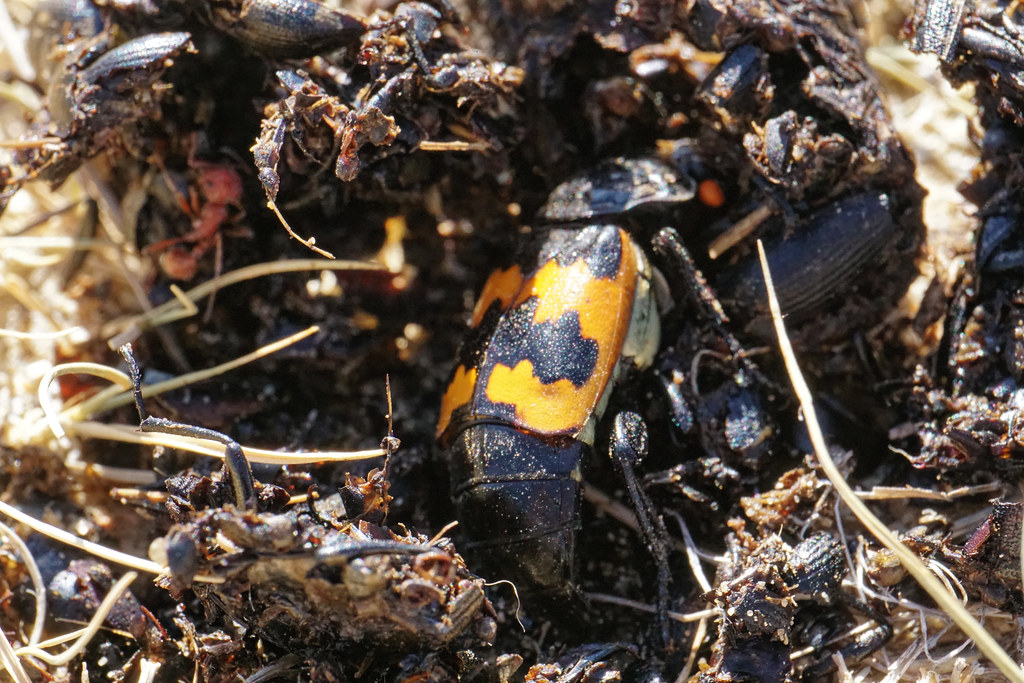
The loss of American burying beetles creates ecological ripples that extend far beyond their immediate environment, disrupting natural processes that have operated for millennia. Without these efficient undertakers, carrion remains on the surface longer, altering soil chemistry and plant growth patterns in ways scientists are only beginning to understand. Other scavengers and decomposers must work harder to fill the gap, potentially affecting their own population dynamics and survival strategies. The beetles’ disappearance also represents the loss of a unique evolutionary pathway that took millions of years to develop, erasing behaviors and adaptations that could never be recovered. Perhaps most importantly, their decline signals broader environmental problems that threaten countless other species sharing their habitats.
Climate Change Adds New Challenges
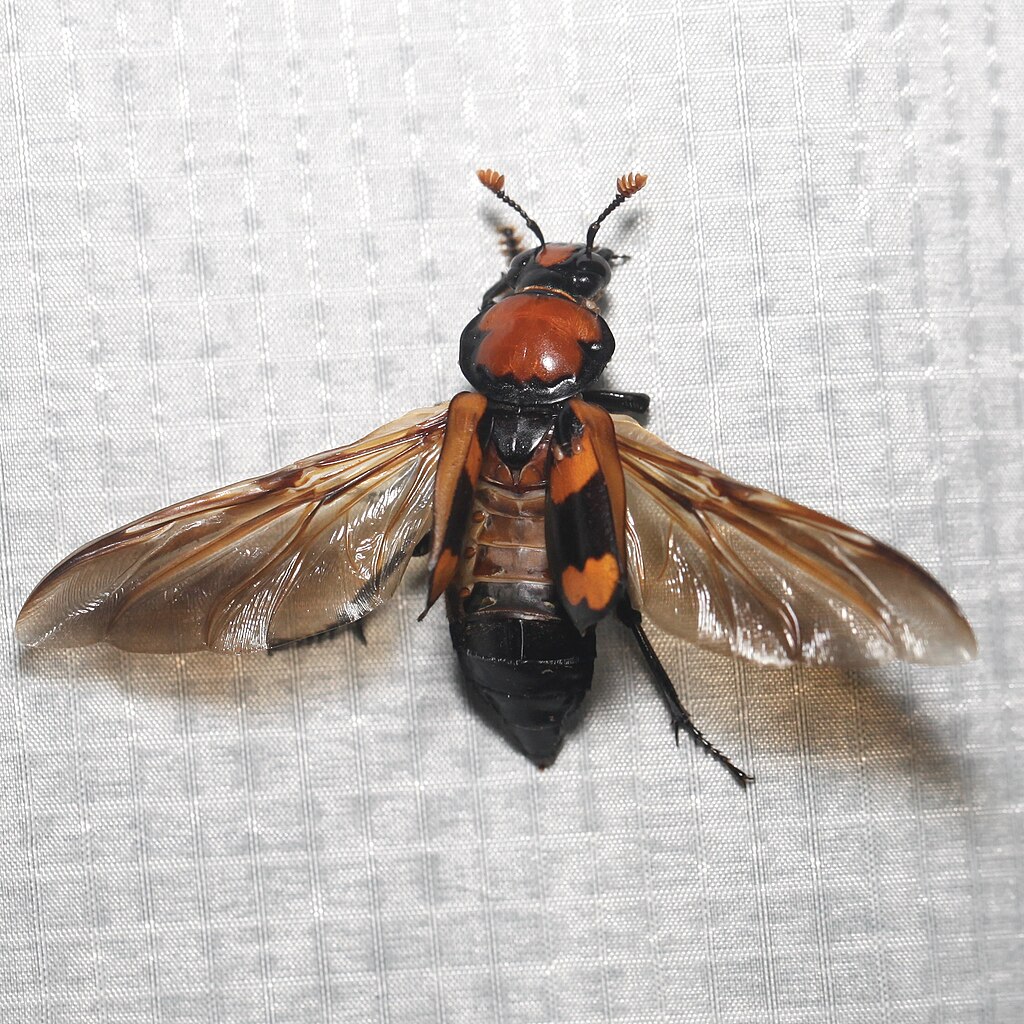
Rising temperatures and shifting weather patterns pose additional threats to American burying beetles already struggling with habitat loss and competition. Climate change affects the timing of carrion availability, as altered migration patterns and breeding seasons of birds and mammals disrupt the beetles’ carefully evolved life cycle. Extreme weather events like droughts and floods can destroy underground burrows and kill developing larvae, while temperature increases may push some populations beyond their thermal tolerance limits. Changing precipitation patterns also affect soil conditions, making it harder for beetles to excavate proper burial chambers for their carrion. Scientists worry that climate change could be the final straw for populations already hanging by a thread, accelerating extinctions before conservation efforts can establish stable breeding populations.
Technology Meets Conservation
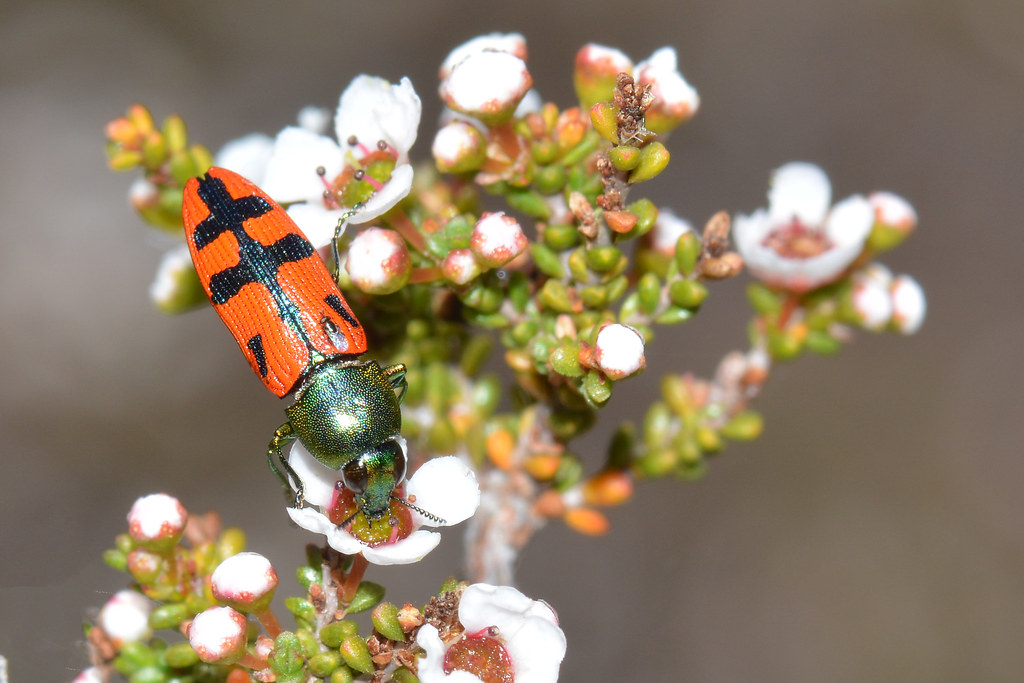
Modern technology has become a powerful ally in the fight to save American burying beetles, providing tools that earlier generations of conservationists could never have imagined. GPS tracking devices smaller than a dime allow researchers to follow individual beetles through their nightly journeys, revealing previously unknown behaviors and habitat preferences. Genetic analysis helps scientists understand population relationships and make informed decisions about which beetles to breed together for maximum genetic diversity. Artificial intelligence and machine learning algorithms analyze vast datasets of environmental conditions, helping predict where beetles are most likely to survive and reproduce successfully. Even smartphone apps now enable citizen scientists to report beetle sightings, expanding monitoring efforts far beyond what professional researchers could accomplish alone.
Success Stories Offer Hope
Despite the challenges, several remarkable success stories demonstrate that American burying beetle recovery is possible with dedicated effort and proper resources. Populations established in Nebraska and South Dakota through captive breeding and release programs have not only survived but begun reproducing naturally in the wild. The Nicodemus National Historic Site in Kansas has become an unexpected beacon of hope, where restored prairie habitat now supports a growing beetle population. Recent surveys in Arkansas and Texas have discovered previously unknown populations, suggesting that these remarkable insects may be more resilient than scientists initially feared. Each success builds knowledge and confidence for future conservation efforts, proving that targeted action can indeed pull species back from the brink of extinction.
What You Can Do to Help
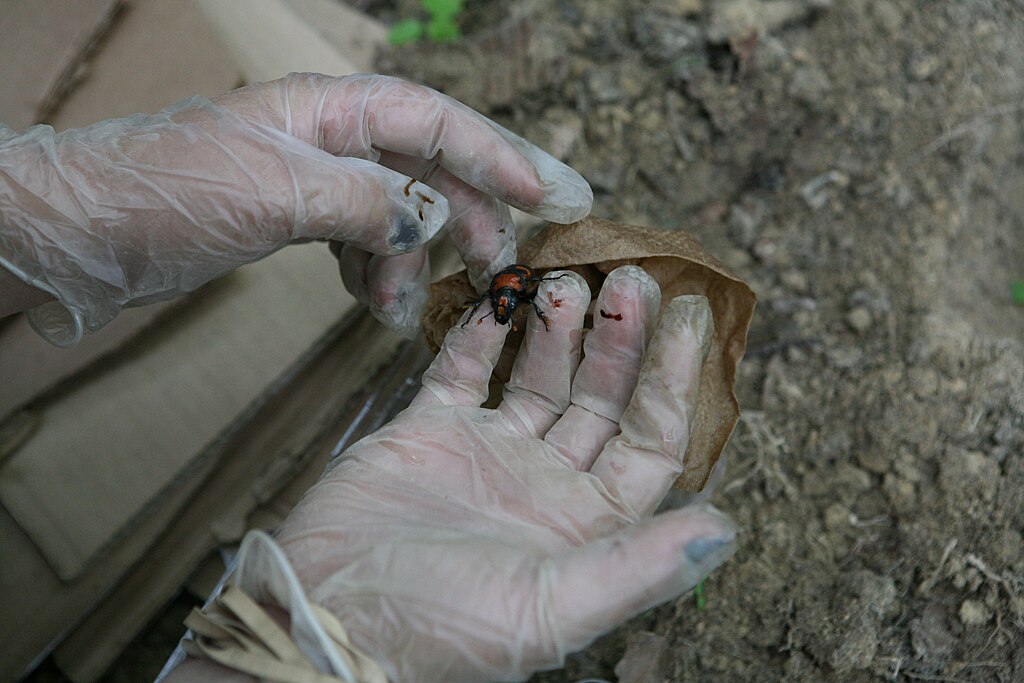
Ordinary people can play meaningful roles in American burying beetle conservation, even if they live far from known beetle populations. Supporting organizations that work on insect conservation through donations or volunteer work provides crucial resources for research and habitat protection efforts. Choosing native plants for gardens and avoiding pesticide use creates healthier ecosystems that benefit not just beetles but countless other wildlife species. Participating in citizen science projects by reporting insect sightings and monitoring local wildlife helps scientists track population changes and identify new conservation opportunities. Even sharing the story of American burying beetles with friends and family raises awareness about the importance of protecting endangered insects. Every action, no matter how small, contributes to building the public support necessary for large-scale conservation success.
A Future Worth Fighting For
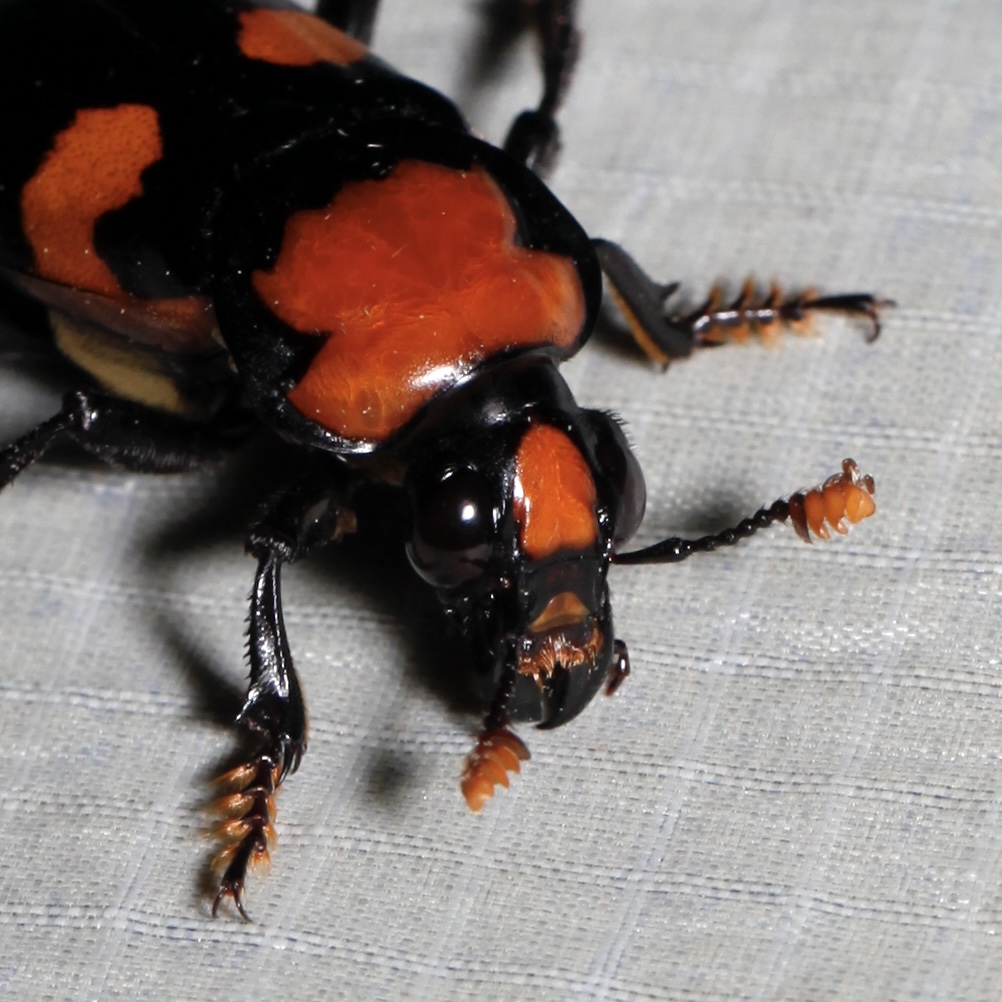
The American burying beetle represents something far greater than a single endangered species – it embodies the intricate connections that hold ecosystems together and the irreplaceable value of biodiversity. These remarkable insects have survived ice ages, climate shifts, and countless other challenges over millions of years, only to face their greatest threat from human activities in the past century. Their story serves as both a warning about the consequences of environmental destruction and an inspiration for what dedicated conservation efforts can achieve. Scientists continue working tirelessly to unlock the secrets of beetle biology and ecology, using each discovery to refine recovery strategies and improve their chances of survival. The question isn’t whether these incredible creatures deserve to survive – it’s whether we have the wisdom and determination to ensure they do.
Conclusion
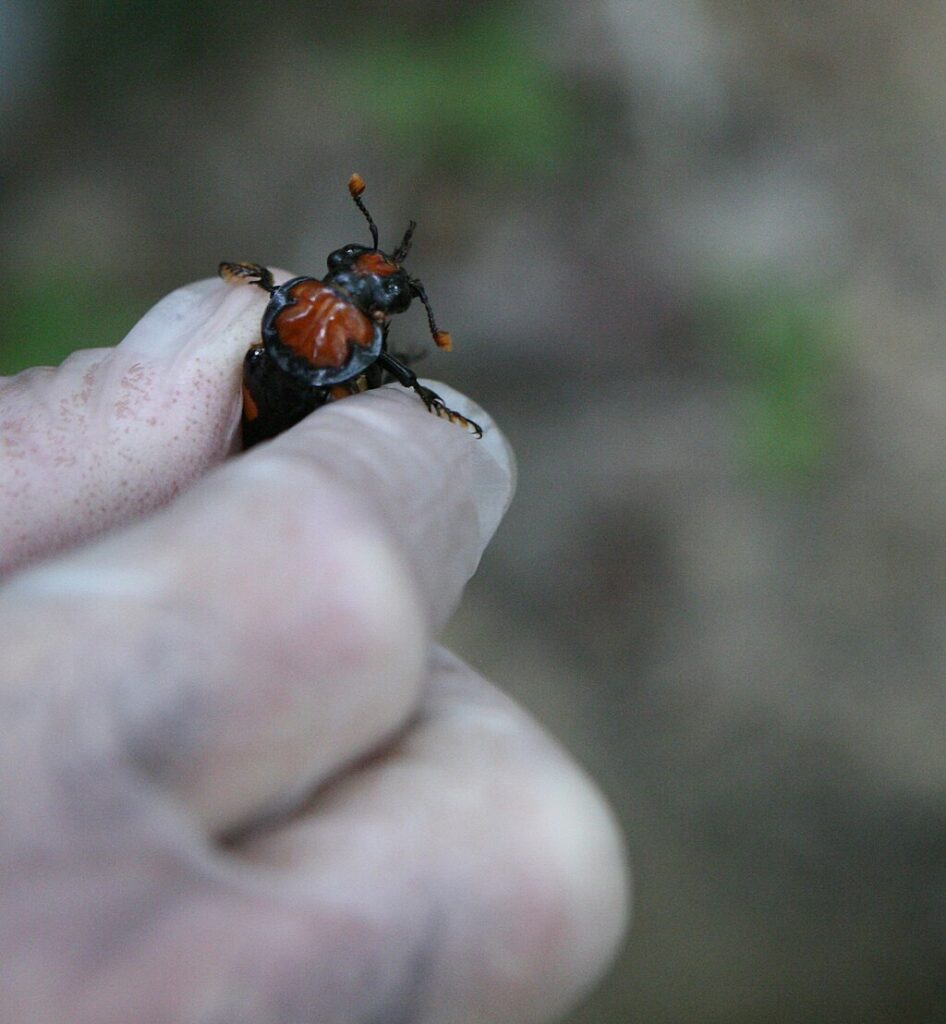
The American burying beetle’s journey from abundant across North America to critically endangered represents one of conservation’s most urgent challenges. These extraordinary insects, with their unique parenting behaviors and ecological importance, continue to capture the imagination of scientists and nature lovers alike. While habitat loss, competition, and climate change have pushed them to the brink, ongoing conservation efforts offer genuine hope for recovery. The dedicated work of researchers, conservationists, and wildlife managers has already achieved remarkable successes, proving that even the most endangered species can be pulled back from extinction with proper support and resources. What will determine whether future generations get to witness these remarkable undertakers at work in the wild?

